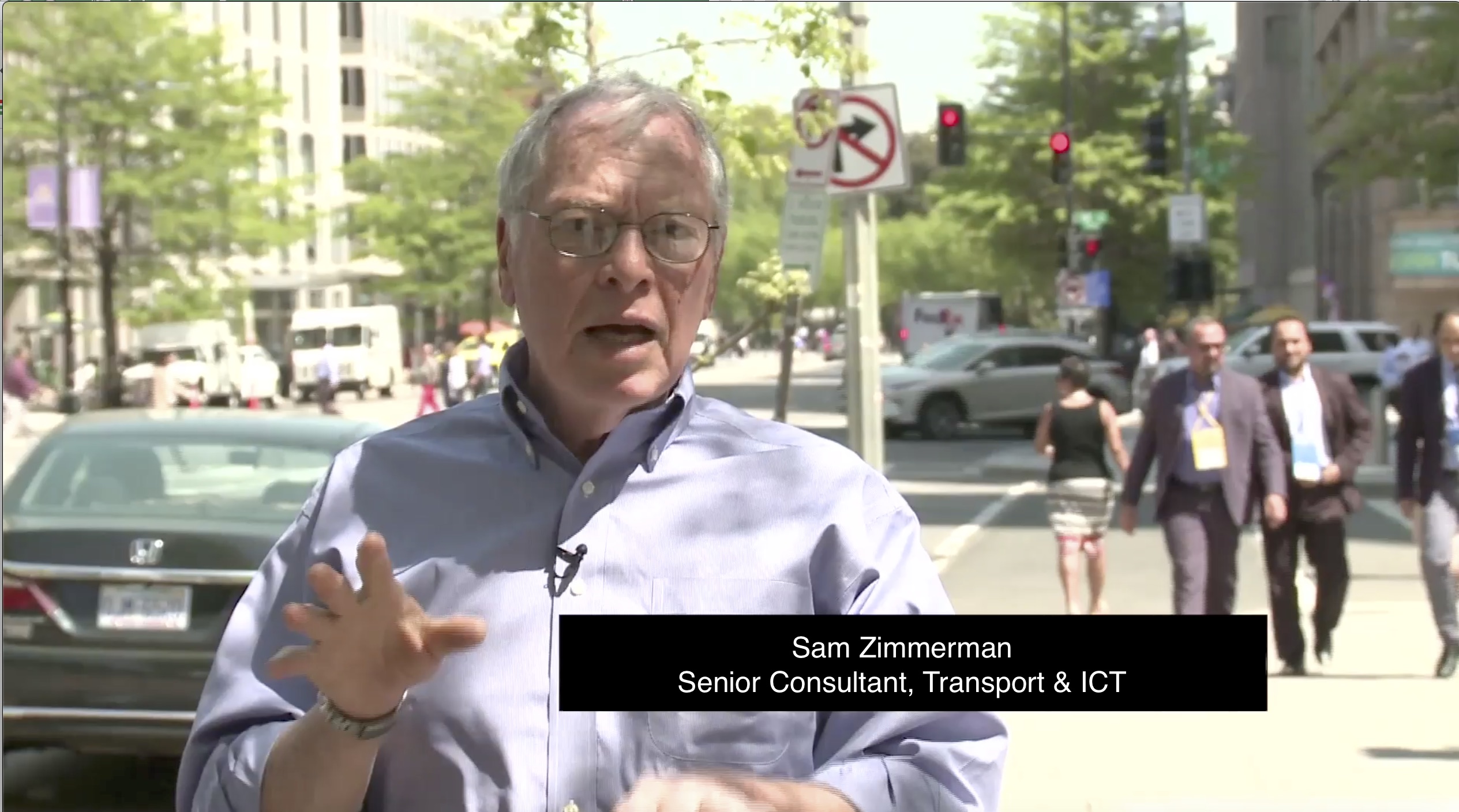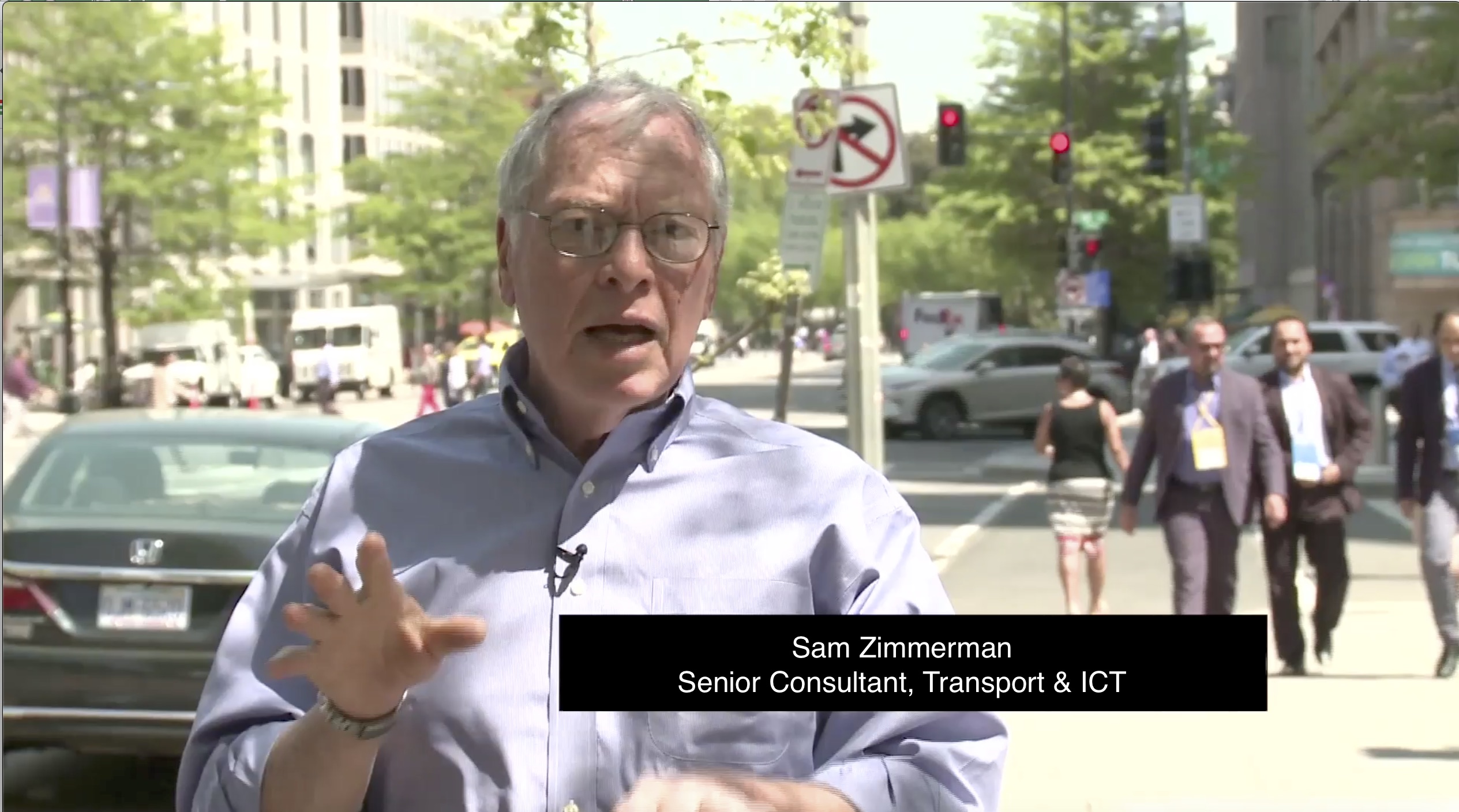Sam Zimmerman: Building “People Centric” Transport in Urumqi, an Example for all of China
2018.12.24

Sam Zimmerman, senior consultant, Transport & ICT and former Bank Staff

TansFORM is publishing a series of interviews with senior specialists from the World Bank, looking at China’s rapid development in the transport sector and the role the bank has played over a course of 30 years. They will share their insights on the experience and lessons China has learned.
My first impression of transport in urban China in the early 2000s was that there was too much an emphasis on building new highways and expanding existing ones. The public transport systemin almost all cities was limited tobuses (except for Shanghai and Beijing which had modest metro networks), all operating in congested mixed traffic.Buses were generally old and quite primitive, many built on truck chassis with front engines and extremely high floors. Some had bare metal floors with wooden strips added and hard plastic seats. They were not air conditioned and had few amenities to make them attractive and comfortable.
Roads were getting moreand morecongested as the cities were growing and motorization increasing even faster. The traffic police had little appetite for giving on-street priority to public transport and enforcing parking restrictions at bus stops and on sidewalks near them.
At that time cities were very keen on“de-densifying” traditional pedestrian-orientedurban cores – moving critical urban activities such as city halls and other municipal administrative offices to low-density fringe locations with poor public transport access. An urban transportpolicywasenunciated in about 2005 to give priority to public transport, but there was little evidence that it was taken seriously in practice.
The World Bank’s office in Beijing is located in a place, many stories above a busy grade separated interchange between a major arterial boulevard and a ring road and an interchange between two metro lines. There were over 300 buses an hour on the Ring Road, a large volume on the arterial street intersecting it yet very few provisions for facilitating safe, secure, off-street interchanges among the many bus lines and the metro lines below. It was also difficult if not impossible for pedestrians to cross any of the roadways without descending underground to walk through the subway stations as there were no protected pedestrian-only signal phases on the surface and the sidewalk system was discontinuous.
From the Bank office, one could easily observe the intense congestion on the roadways below for the entire day, the long lines of pedestrians waiting in the street to board buses during peak periods, the crowds of pedestrians trying to cross the street without being hit by turning cars and the poor air quality
At that time, responsibility for urban transport functions was dispersed at all levels of government. Various bureaus and ministries were responsible for a single aspect of the transport system. There were disconnects among planning, construction and operations dealing with bus and metro systems, highways, streets and sidewalks. There was no unique ministry at the national level responsible for all aspects of transport, urban or otherwise.
By the time I retired, leadership at all levels of government - individual cities, provinces, the national government had begun to recognize that public transport and non-motorized transport are essential to life in cities and that successful planning must be multi-modal and integrated. There have also been institutional changes, which the World Bank helped officials achieve.
The institutional changes reflected the view that urban transport is a complex subject worthy of a central government focus and integration at all governmental levels. This integration is especially important for public transport which is so dependent on the efficient, safe operation of roadways, streets and non-motorized transport.
The Bank was able to bring people from the public transport planning, roadway construction and traffic management/operations together as cohesive teams in a variety of urban transport projects.
Urumqi was a perfect example of this approach. In a break from tradition, we asked local officials in Urumqi, to involve the traffic police from planning onward for a roadway project that also had major public and non-motorized transport components. Initially, planning and construction officials couldn’t understand why, but eventually there was recognition of the importance of traffic operations and management and non-motorized access to the success of public transport.
As an illustration of how this worked, we suggested that the project plan include pedestrian-only traffic signals in the middle of a busy, long roadway segment in the primary corridor for use by people accessing bus stops serving a large middle school and a large hospital. The traffic police were initially reluctant to do so because they thought “it would slow up traffic.” They soon recognized that that was indeed the purpose, to manage traffic to make crossing the street safer and easier for the thousands of people using public transport to access the largest middle school and hospital in the Province.
In the end, pedestrian-only signals and signal phases, physical pedestrian refuges in the medians of wide streets, improved shelters, better street lighting, widened sidewalks and bollards to discourage parking on the sidewalk around them all were added at bus stops to what was originally conceived as a strictly roadway corridor upgrade project. Urumqi’s traffic police in Urumqi became key actors and public transport advocates in the “leading group” planning and implementing the city’s upgraded public transport system.
Historically, every Bank project in China had a traffic management component, but the amounts of money were small and directed to the sole objective of making vehicle movement more efficient. In Urumqi, the Bank helped change the objective to improvingpeople transport by making non-motorized and public transport more attractive as part of comprehensive corridor upgrades involving more than just roadway capacity. With the Bank’s help, this approach, known as “Integrated Corridor Management or ICM, has been applied in Wuhan, Xiangfan, Shenyang, Xining, and other places in China as well as in Cities in India, Latin America and Africa.
Before our Urumqi ICM project’s completion, the mayor had said that the City had two transport priorities: another ring road (we helped finance the first) and a metro system, both of which had a host of physical, financial and economic efficiency issues at the time. The bus system was not mentioned. Urumqi ultimately leveraged Bank financial and other support to make the entire transport system work better for all users, public transport customers and providers as well as other roadway users. Besides the ICM project, the Bank also helped with planning and implementing a public transport ITS system. The young operations management and planning staff of the Bus Company still make excellent use of the system for operations management, scheduling/assigning vehicles and crew and service planning, all of which make public transport more efficient and attractive.
The other factor contributing to the success of the Bank’s urban transport work in Urumqi and China as a whole was an aggressive capacity building program. The program was broad in terms of the topics covered as well as wide in pedagogical mechanisms and audiences. It encompassed an aggressive mix of capacity building methods, from formal workshops to facilitated, city-to-city experience exchanges for technical, managerial and policy leadership at all levels of government. Again, Urumqi pioneered this approach, one that was ultimately extended to the rest of China and beyond.



